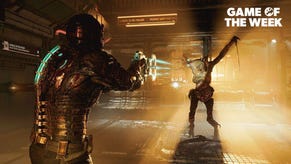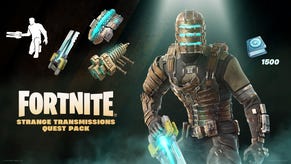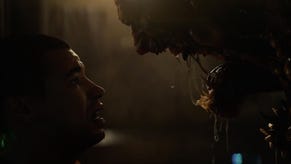Dead Space
You can't leave. She won't let you.
Full disclosure: I love Event Horizon. I own the odd-looking limited edition box set DVD, and cherish it despite it being precisely the wrong size to fit on any DVD shelves. I've seen it sufficiently often that I can probably lip-sync to most of the really good scenes.
It's important you understand this, because without the same appreciation for "Paul Anderson's Good Film" (as very much distinct from all of Paul Anderson's other films), you won't be instantly grabbed by the premise of Dead Space - EA's latest foray into developing original games, and potentially the start of a new horror series.
Set 500 years in the future, Dead Space casts you as Isaac Clarke, an engineer who is dispatched into deep space with a small shuttle crew to find out why the enormous Ishimura mining ship has lost contact with Earth. Several kilometres long and capable of strip-mining an entire planet, the Ishimura is a formidable vessel, and home to over a thousand crew. When you arrive, however, it's quiet, cold and dead - but as you attempt to restart the ship's systems, you discover that whatever disposed of the original crew is still lurking in the shadows...
A dimension of pure chaos
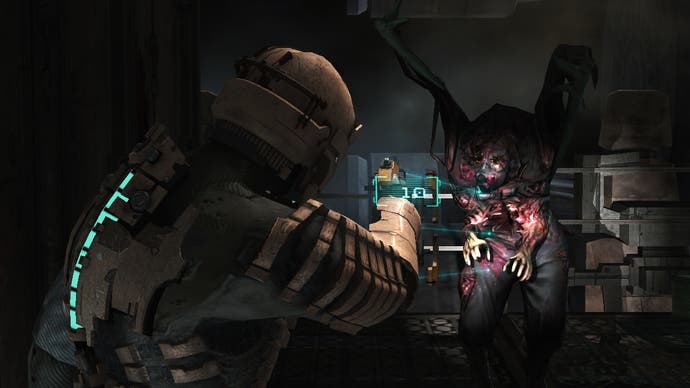
You can see where the Event Horizon comparisons come in, then - and indeed, we rather suspect that Anderson's film has been a major inspiration for Dead Space (are we conspiracy theorists for noting the protagonist's surname, Clarke, matches up with Event Horizon's rescue ship, the Lewis and Clarke?). The atmosphere on board the Ishimura is disquieting and sinister, with vast, epic spaces defined in sweeping Gothic architecture that owes as much to medieval cathedrals as to spaceship design. Playing with flickering lights, rumbling sound effects and suspicious shadows, the game does its utmost to make the player uncomfortable and on edge.
However, we're not convinced by EA's description of Dead Space as "survival horror" - a genre largely defined by games like Silent Hill and Project Zero, where combat does play a secondary role to basic survival. This is very much an action-horror game - with the chilling atmosphere bursting into extremely raw, tense combat on a regular basis.
According to producer Glen Schofield, who was our tour guide around the Ishimura, the sections which we saw were particularly action-heavy. However, even if other areas of the game are more sedate and more psychological in their scares, this is still a game whose shooter credentials are right up there with its horror credentials.
Walking Clarke around in third-person perspective (in a really nice touch, all HUD elements appear either as indicators on his space suit, or as holograms which are projected into the air around by the suit), he is assailed by a steady stream of nightmarish fiends. The Thing is the real inspiration here; from vastly mutated humans with razor-sharp, insect-like limbs, to hideous dead babies with bloodied tentacles waving from gory wounds in their backs, Dead Space doesn't hold back.

Just as well that Clarke is well fit to defend himself. Although he's an engineer, rather than a marine, the Ishimura is helpfully equipped with a wide variety of mining tools which do a rather fine job of dismembering enemies. Your most basic weapon is a Plasma Cutter, which is essentially a powerful pistol - other guns we saw included a Line Gun, which fires out a long arc that's excellent at shearing enemies in half, and an as-yet-unnamed ("the first name we thought up for it was really dumb," laughs Schofield) weapon which is essentially a circular saw that floats in the air in front of you.
Speaking of dismemberment, that's actually the first feature that Schofield mentions in the game - "strategic dismemberment", which is the ability to blow off an enemys limb's, tentacles, head(s) or other body parts. This makes a shocking mess, as you might imagine, but doesn't always kill them - enemies who have lost their legs will still crawl and flop towards you, for instance. Even decapitation may not always be fatal to these hellish nasties.


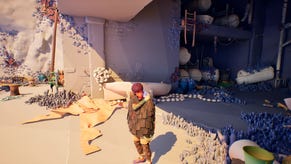
-_-First-Person-Mod-_-Official-Release-6-6-screenshot.png?width=291&height=164&fit=crop&quality=80&format=jpg&auto=webp)

